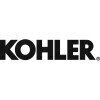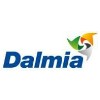Filter interviews by
AIS Glass Solutions Process Engineer Interview Questions and Answers
AIS Glass Solutions Process Engineer Interview Experiences
4 interviews found
I applied via Naukri.com and was interviewed in Oct 2021. There were 2 interview rounds.

(3 Questions)
- Q1. Share details of your previous job.
- Q2. Personal and Techanical interview
- Q3. Why should we hire you
Interview Preparation Tips
- Techanical
- Reasoning
I applied via Walk-in
Interview Questionnaire
1 Question
- Q1. Walk in interview
Interview Preparation Tips
I applied via Campus Placement and was interviewed before Jul 2020. There were 5 interview rounds.
Interview Questionnaire
1 Question
- Q1. There were two personal interviews. One was HR and the other was technical. In the HR interview i was asked general questions relating to my personality like hobbies, ambitions etc. The technical interview...
Interview Preparation Tips
I applied via Campus Placement and was interviewed before Oct 2020. There were 5 interview rounds.
Interview Questionnaire
1 Question
- Q1. Basis of manufacturing process.
Interview Preparation Tips
AIS Glass Solutions interview questions for designations
Top trending discussions






Interview questions from similar companies

I applied via Recruitment Consulltant and was interviewed before May 2021. There were 2 interview rounds.
(1 Question)
- Q1. About yourself and work experience
(1 Question)
- Q1. What do you do there

(1 Question)
- Q1. RS -485 questions

I applied via Approached by Company and was interviewed before Jul 2023. There were 3 interview rounds.
(1 Question)
- Q1. Questions about Main job responsibilities, CTC & notice period
(1 Question)
- Q1. Question about Test procedures, Quality standards
(1 Question)
- Q1. Questions on Data analysis

I applied via Naukri.com and was interviewed in Aug 2021. There was 1 interview round.
Interview Preparation Tips
Process Engineer Interview Questions & Answers
Factocad Robotics and Automationposted on 20 Nov 2024
I applied via Approached by Company and was interviewed in Oct 2024. There was 1 interview round.
(2 Questions)
- Q1. What is 321 principle in GD&T
- Ans.
The 321 principle in GD&T refers to the rule that a feature must be within a specified tolerance zone defined by three datums.
321 principle states that a feature must be located within a tolerance zone defined by three datums
The first datum constrains movement in one direction, the second datum constrains movement in a second direction, and the third datum constrains movement in a third direction
This principle ensures ...
- Q2. How you ensure quality of product
- Ans.
Quality of product is ensured through rigorous testing, adherence to standards, continuous improvement, and collaboration with cross-functional teams.
Implementing quality control measures throughout the production process
Conducting regular inspections and audits to identify and address any issues
Utilizing statistical process control techniques to monitor and improve product quality
Collaborating with suppliers to ensure...
Process Engineer Interview Questions & Answers
Chemvap Engineering Private Limitedposted on 4 Jul 2024
I applied via Referral and was interviewed before Jul 2023. There were 2 interview rounds.
(7 Questions)
- Q1. What is pump hydraulic calculation?
- Ans.
Hydraulic calculation for pumps involves determining the flow rate, pressure, power, and efficiency of a pump system.
Calculate flow rate using the formula Q = VA, where Q is flow rate, V is velocity, and A is cross-sectional area.
Determine pressure using the formula P = F/A, where P is pressure, F is force, and A is area.
Calculate power using the formula P = Q*H*rho*g, where P is power, Q is flow rate, H is head, rho i...
- Q2. What are types of pumps?
- Ans.
Types of pumps include centrifugal pumps, positive displacement pumps, and axial flow pumps.
Centrifugal pumps: use a rotating impeller to increase the pressure of a fluid.
Positive displacement pumps: trap a fixed amount of fluid and then force it into a discharge pipe.
Axial flow pumps: move fluid parallel to the pump shaft.
Examples: Centrifugal pump - water pump, Positive displacement pump - diaphragm pump, Axial flow
- Q3. Explain your achievements?
- Ans.
I have successfully led process improvement projects resulting in cost savings and increased efficiency.
Led a team in implementing a new production process that reduced waste by 20%
Developed and implemented a new quality control system that improved product quality by 15%
Identified and resolved bottlenecks in the production line, increasing output by 10%
- Q4. Any cost reduction experience related to process plants?
- Ans.
Yes, I have experience in implementing cost reduction strategies in process plants.
Implemented lean manufacturing principles to reduce waste and improve efficiency
Optimized equipment maintenance schedules to minimize downtime and reduce costs
Negotiated better pricing with suppliers to lower material costs
Introduced automation technologies to streamline processes and reduce labor costs
- Q5. Troubleshooting experience in process plants?
- Ans.
I have extensive troubleshooting experience in process plants, identifying and resolving issues to ensure smooth operations.
Identifying root causes of process issues
Developing and implementing solutions to improve efficiency
Collaborating with cross-functional teams to troubleshoot complex problems
Utilizing data analysis and problem-solving skills
Adapting quickly to changing situations and priorities
- Q6. Describe Detailed Pump hydraulic calculation?
- Ans.
Pump hydraulic calculation involves determining the pump head, flow rate, and power requirements for a specific system.
Calculate total dynamic head (TDH) by adding the static head, friction head, and velocity head
Determine the required flow rate based on system requirements
Calculate the pump power requirements using the formula: Power (kW) = (Q x TDH) / (3.6 x efficiency)
Consider factors such as pump efficiency, pipe s
- Q7. What is Coefficient of Control valve?
- Ans.
The coefficient of a control valve is a measure of the valve's flow capacity relative to the pressure drop across it.
The coefficient of a control valve, also known as the flow coefficient (Cv), is a dimensionless number that represents the flow capacity of the valve for a given pressure drop.
It is used to compare the performance of different valves and is typically determined experimentally.
A higher coefficient indicat...
(2 Questions)
- Q1. About salary expectation
- Q2. Reason for job change
- Ans.
Seeking new challenges and opportunities for professional growth.
Looking for new challenges to expand my skill set
Seeking opportunities for career advancement
Interested in working in a different industry or with new technologies
Interview Preparation Tips
- Pumps
- Control Valves
- Previous experience
- Heat Exchangers
- Steam economy
- Mass heat balance
AIS Glass Solutions Interview FAQs
Tell us how to improve this page.
AIS Glass Solutions Interviews By Designations
- AIS Glass Solutions Process Engineer Interview Questions
- AIS Glass Solutions Assistant Sales Manager Interview Questions
- AIS Glass Solutions Diploma Trainee Engineer Interview Questions
- AIS Glass Solutions Area Manager Interview Questions
- AIS Glass Solutions Product Engineer Interview Questions
- AIS Glass Solutions Marketing Head Interview Questions
- AIS Glass Solutions Sales Officer Interview Questions
- AIS Glass Solutions Finance Executive Interview Questions
- Show more
Interview Questions for Popular Designations
- Process Engineer Trainee Interview Questions
- Process Associate Interview Questions
- Chemical Process Engineer Interview Questions
- Junior Process Engineer Interview Questions
- Processing Executive Interview Questions
- Process Developer Interview Questions
- Assistant Manager Process Engineering Interview Questions
- Process Quality Engineer Interview Questions
- Show more
Interview Questions from Similar Companies
Fast track your campus placements
AIS Glass Solutions Process Engineer Reviews and Ratings
based on 12 reviews
Rating in categories
|
Process Engineer
75
salaries
| ₹2.4 L/yr - ₹7.5 L/yr |
|
Graduate Engineer Trainee (Get)
35
salaries
| ₹1 L/yr - ₹4 L/yr |
|
Assistant Manager
31
salaries
| ₹4.8 L/yr - ₹11.8 L/yr |
|
Diploma Trainee Engineer
31
salaries
| ₹1 L/yr - ₹3 L/yr |
|
Junior Engineer
25
salaries
| ₹1.9 L/yr - ₹3.8 L/yr |

Infra.Market

Jaquar

Kohler

Ashirvad Pipes
- Home >
- Interviews >
- AIS Glass Solutions Interview Questions >
- AIS Glass Solutions Process Engineer Interview Questions
















